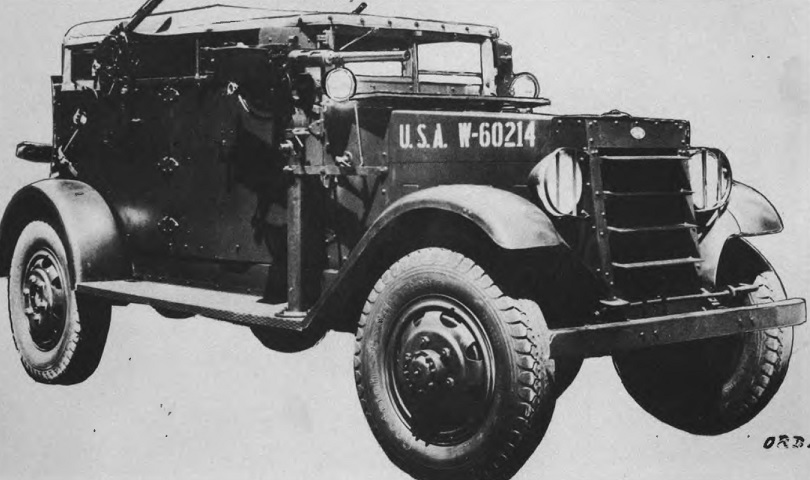
Scout Car M1.

The machine guns are mounted on this vehicle, the .50cal on the running board in front of the passenger door and a .30cal on each side of the rear passenger compartment. A canvas top is installed, and the armored flap for the windshield is folded forward onto the hood. (Picture from Development of Armored Vehicles, volume II: Armored Cars, Scout Cars, and Personnel Carriers.)
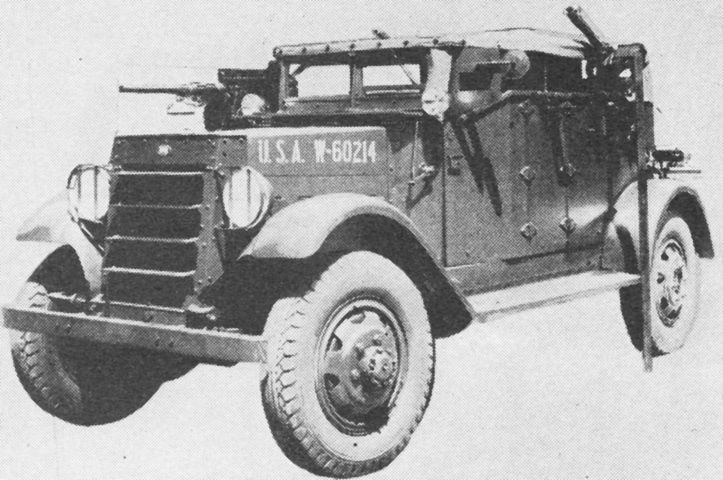
Seen from the opposite side, a measuring scale has been place in front of the rear wheel. (Picture from FM 30-40 C1 Military Intelligence Identification of United States Armored Vehicles.)
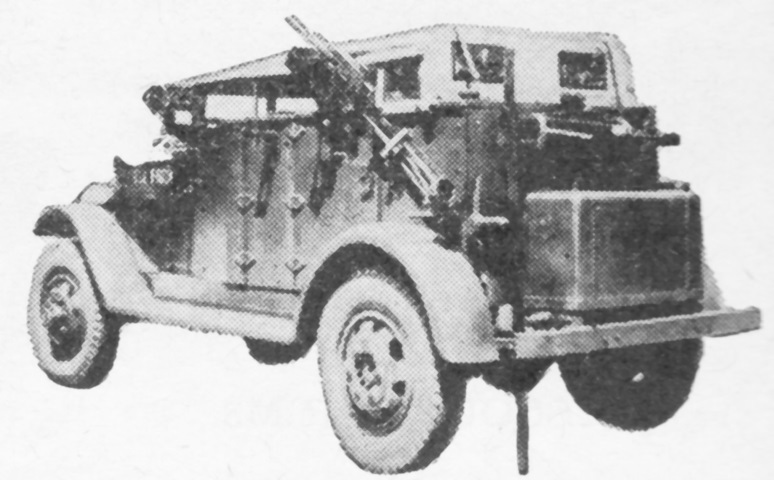
A stowage box was carried on the rear bumper, and the .30cal machine gun is secured for travel. A machine gun tripod was stowed on the car's rear, and behind this was another pedestal mount for a .50cal machine gun. The 2-yard (183cm) stick is again present, behind the bumper. (Picture from FM 30-40 C1 Military Intelligence Identification of United States Armored Vehicles.)
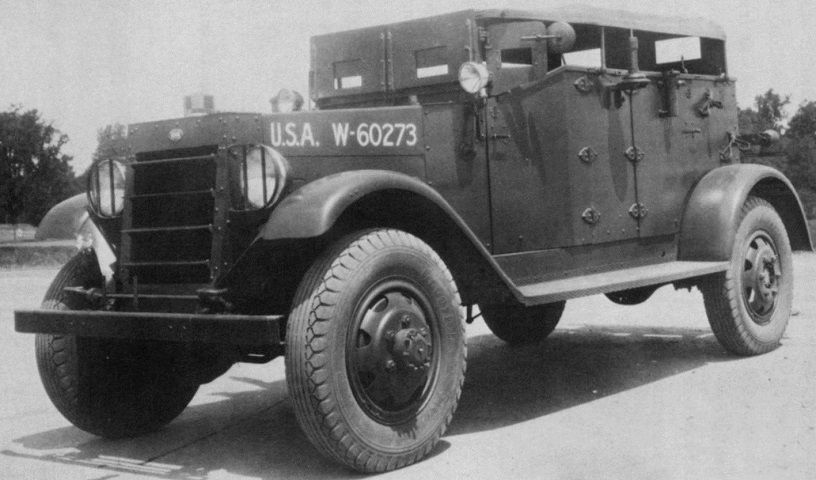
The armored flap for the windshield is raised in this picture. An antenna mount protrudes from beside the driver, the left-hand .30cal machine gun pintle mount is behind this, and stowage clips for the machine gun tripod can be seen near the rear of the vehicle. (Picture from Tank Data, vol. 2.)
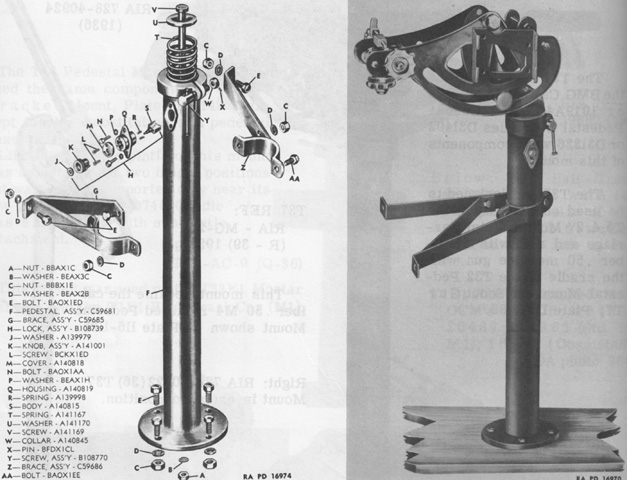
Exploded and assembled views of the pedestal truck mount M4 for the caliber .50 machine gun are shown here. (Picture from Weapon Mounts for Secondary Armament.)
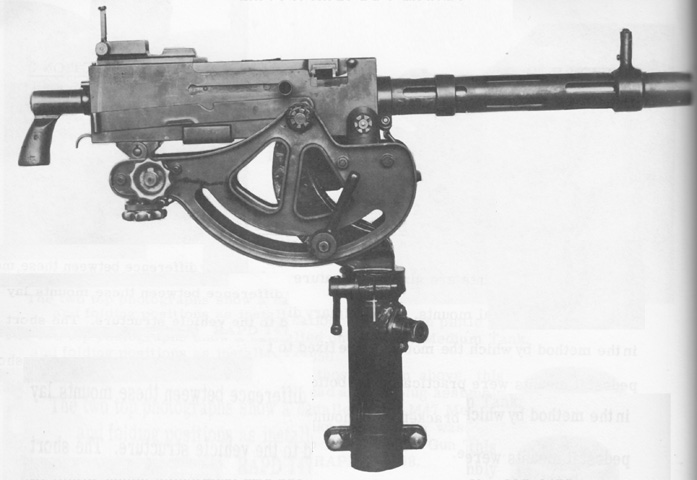
The bracket mount M6 was attached to the rear doors and could accept a .30cal machine gun and cradle. It provided no height adjustment. (Picture from Weapon Mounts for Secondary Armament.)
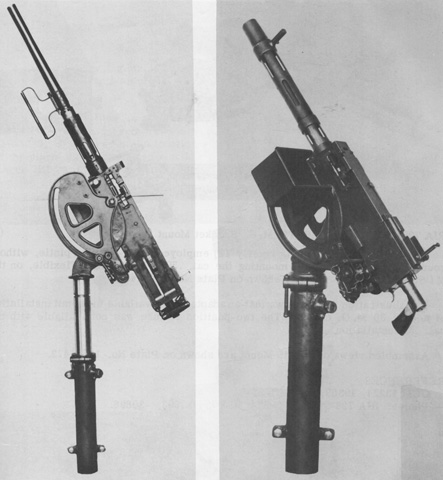
The bracket mount M6 could accept either .50cal or .30cal machine guns, illustrated on the left and right, respectively. When the .50cal was mounted, a 2-position pintle was used. (Picture from Weapon Mounts for Secondary Armament.)